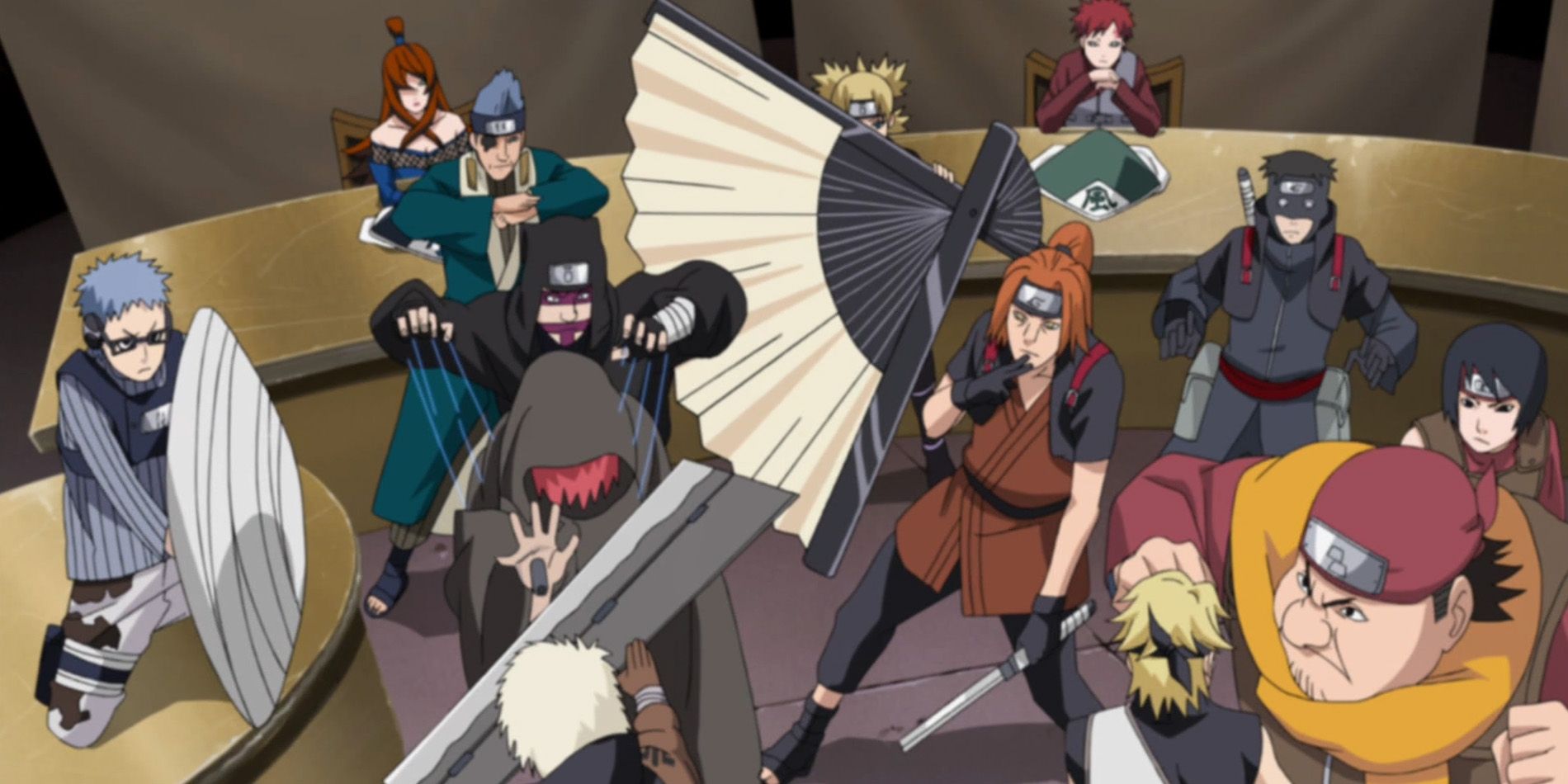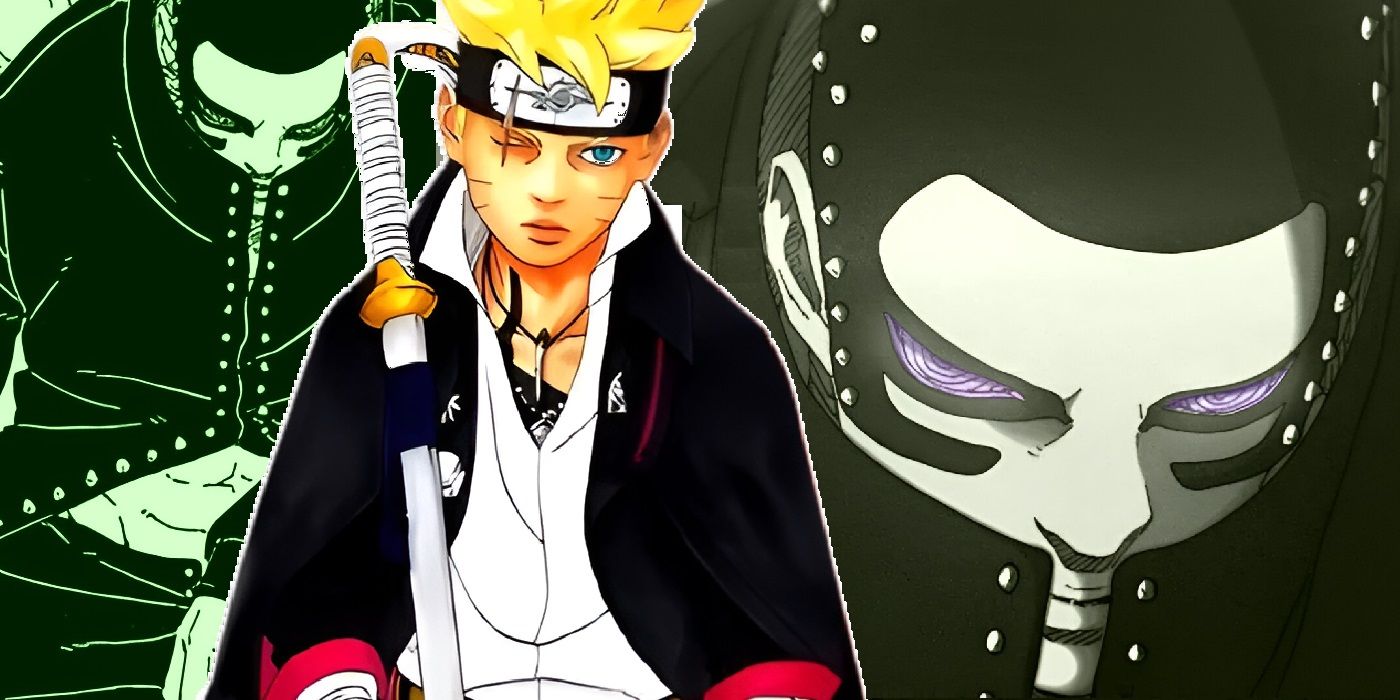
Although sequels often expand and advance the story and characters of the original, Boruto stands out for its nonconformity. Not only does it tell its own story effectively, it also carefully revisits narutoits parent series. By doing this, Boruto transforms, expands and deepens the original narrative, making it richer and more compelling than ever. In fact, the Boruto franchise – especially Boruto: Two Blue Vortexes – significantly updated the naruto universe in important ways.
Specifically, Two blue vortices Chapter #15 shows how relations between shinobi communities have evolved since the era of Naruto. The conversation between Shikamaru and Kankuro of Sunagakure demonstrates this change, as relations between the villages have transformed from sources of tension to bases of strength. This significant improvement of the naruto The universe extends beyond individual character development, introducing a fundamental change in the traditions and customs of the shinobi world. This change is not just superficial; instead, it feels increasingly crucial to the story's ultimate resolution.
The History of Blood Between Villages in Naruto
The battle for shinobi supremacy in the Naruto-verse has kept ninja clans at each other's throats for generations
Conflict has been an inherent part of the shinobi world since its inception. Although internal disputes often arise between family, friends, and within communities, some of the most devastating clashes have occurred between shinobi communities. Mirroring real-world dynamics, these intercommunal conflicts often result from personal and localized issues. To understand the underlying causes, it is essential to delve into the rich history of shinobi communities within the naruto universe and explore its development.
During the Warring States Period, shinobi initially organized themselves into independent clans, linked by common ancestry, shared living arrangements, and collective interests. The clans competed fiercely for power, prestige, and territory, often seeking the favor of the Daimyo, the leaders of the Five Nations. Securing their patronage provided significant advantages, while the forced seizure of rival clans' lands offered another path to dominance. This dual quest for power fueled almost constant conflict within and between the Five Nations.
In the Land of Fire, centuries of bloody conflict between the Senju and Uchiha clans finally subsided when Hashirama Senju and Madara Uchiha sought a new path. Tired of the endless bloodshed, they proposed an innovative idea: forming a unified shinobi community that transcended clan affiliations. This alliance would prioritize national interests, pursuing military and political objectives while supporting all shinobi in the Land of Fire, regardless of clan affiliation. By setting aside personal and clan differences, they aimed to create a cohesive force that would uplift the entire shinobi community.
The historic cooperation between Hashirama and Madara culminated in the founding of Konoha, the first large-scale multi-clan shinobi community. Konoha's success inspired the other four nations to establish their own hidden shinobi villages, which significantly reduced conflict and domestic violence between shinobi. However, despite the reduction in internal shinobi conflict, the villages did little to end competition for power and prestige between nations. This enduring tension, fueled by the lingering distrust of the Warring States Period and the ambitions of several Daimyo, led to the Great Ninja Wars, a series of devastating conflicts between the shinobi of the hidden villages.
In the Boruto Era, the five hidden villages remain united
The Fourth Great Ninja War marked the end of conflict between villages
The Fourth Great Ninja War, however, proved to be a turning point. Faced with the threat of annihilation, the Five Hidden Villages put aside their long-standing differences to face a common enemy: Obito Uchiha, disguised as Konoha's legendary co-founder Madara Uchiha, who declared war on the shinobi world. This unprecedented unity showed the true strength of the shinobi world. Consequently, after his difficult victory, the Five Hidden Villages recognized the value of solidarity and established measures to ensure cooperation on issues of common interest.
naruto concluded on a hopeful note, with the Five Hidden Villages enjoying better relations. Borutohowever, it reveals that the unity forged during the Fourth Great Ninja War was a transformative milestone, ushering in lasting peace and cooperation between shinobi communities. This is clearly evident in the conversation between Shikamaru and Kankuro, where information is shared openly and support is readily offered. This exchange, however, is just one illustration of the profound change in the dynamics of the shinobi community, showing the depth of their recent collaboration.
Since the beginning of the series, the Kage of each village have continued to meet periodically to discuss important issues relating to their communities and the shinobi world at large. Although there were some Five Kage Summit meetings in narutothey occurred more frequently and easily in Boruto. For example, the five Kage met in Konoha during the “Chunin Exam Arc” to discuss, among other topics, the recurring Otsutsuki threat. They met again at Boruto anime "Mitsuki's Disappearance Arc" to discuss his defection from the village.
These discussions show that the village's internal affairs and external threats to all shinobi can provoke a united response from the Five Hidden Villages. With the Divine Trees now posing an existential threat to all villages, Boruto It showed that the shinobi world is in the strongest position it has ever been in to fight with unified determination.

